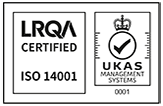
A skip is heavy, even before you’ve started loading it. So be mindful of where your skip will be situated and remind yourself on how to fill it properly and responsibly to avoid injury to yourself or others.
Preparing for the arrival of your skip
Before your skip arrives, make sure you have a flat, stable surface for it that’s clear of obstructions. It helps to have some decent space around it to help manoeuvre it into position and give you clear access when you’re ready to start filling it. Skips are heavy, so once it’s been delivered, don’t try and move it. During delivery, make sure pets and children are safely away from the area.
Where can I put a skip?
A solid driveway that’s not on a slope is a good place for a skip. But if that’s not available, it may be able to go in your garden if there’s sufficient space. Alternatively, you can apply for a permit for the skip to go on the road outside of your home. Wherever you have in mind for your skip to go, check that there’s enough room.
How do I load a skip safely?
Bigger and heavier items should be evenly spread at the bottom of the skip, with lighter items at the top. Get help when lifting heavy items into the skip to avoid injury. Don’t overfill your skip – it’s illegal for us to take a skip that has exceeded its volume.
Can anything go in a skip?
There are a number of hazardous materials that can’t go in your skip as they can be damaging to people and the environment. Items such as appliances, electricals, solvents, fuels and batteries can’t go in the skip. Before you start loading, check what is and isn’t allowed as some items you might think are acceptable to be disposed of, such as plasterboard, must be disposed of separately.
For more information about skip hire, contact us on 01903 762020 or email info@rabbitgroup.co.uk




